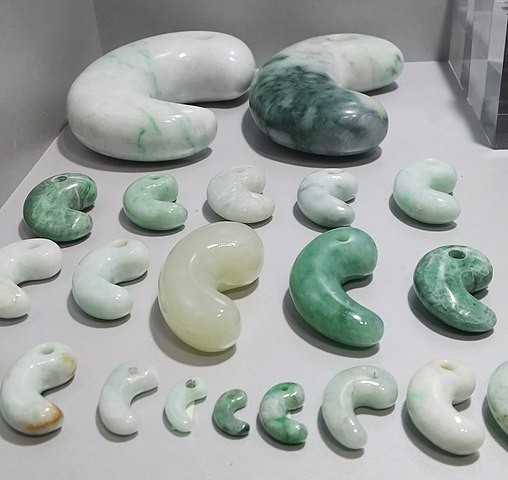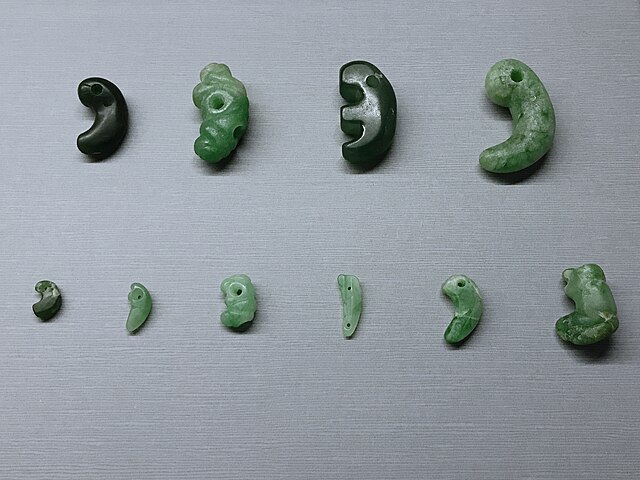Urban Legends from Japan – Strange Tales, Mysterious Encounters, and Modern Myths
The Impossible Hole: Is This Ancient Japanese Jewel a Prehistoric OOPArt?

Japan’s history is steeped in myth and mystery, but few artifacts capture the imagination quite like the Magatama. These comma-shaped jewels are most famously known as one of the Three Sacred Treasures of Japan, symbols of the imperial throne. But among these ancient ornaments lies a profound enigma—a technological puzzle that some researchers believe is a genuine OOPArt (Out-of-Place Artifact). The mystery isn’t the jewel itself, but the perfectly drilled hole within it.
What is a Magatama and Why is it So Special?
Magatama are curved, comma-shaped beads that have been discovered in archaeological sites in Japan dating as far back as the Jomon period (c. 10,000–300 BCE). Crafted from materials like crystal and amber, their iconic shape became standardized around the Yayoi period (c. 300 BCE–300 CE).
The most prized and mysterious of all are the Magatama carved from jadeite, a specific and incredibly hard type of jade. These jadeite jewels were not just beautiful accessories; they held deep cultural and spiritual significance. The Yasakani no Magatama is one such jewel, a legendary artifact that, along with a mirror and a sword, forms the Imperial Regalia of Japan.
But it’s the hole, drilled to pass a cord through, that transforms this ancient treasure into a potential piece of ancient high technology.
The Mystery of the “Impossible” Hole
The puzzle lies in the extreme hardness of jadeite. On the Mohs scale of mineral hardness, jadeite ranks a solid 7. This makes it harder than steel and glass, capable of scratching both. Even with modern diamond-tipped tools, cutting and drilling jadeite is a challenging task.
So how did ancient people, with no electricity or advanced machinery, manage to drill such clean, precise holes into one of the planet’s toughest minerals? The holes often appear as if they were made with a modern electric drill, showing a level of precision that seems utterly out of place for the era. This baffling feat is why the jadeite Magatama is often hailed as one of Japan’s most compelling OOPArts.

Ancient Ingenuity or Lost Super-Technology?
Of course, archaeologists and researchers have proposed theories. The leading hypothesis suggests a method of painstaking abrasive drilling. The ancient artisans might have used a hollow bamboo rod, spinning it rapidly while continuously applying an abrasive powder, such as quartz sand (which also has a Mohs hardness of 7).
Evidence from other archaeological sites supports the idea that this process was incredibly arduous. A perforated jadeite stone found at the Nagamine site in Nagano Prefecture shows several small dents next to the main hole—likely the marks of failed attempts to start the drilling process. It was a task that required immense patience and skill.
Experiments have confirmed that it is indeed possible to drill through jadeite using bamboo and quartz sand. However, the process would have required an unimaginable amount of time and relentless effort for a single hole.
This leaves us with a profound sense of awe. Whether it was achieved through a forgotten super-technology or simply through human perseverance, the creation of the jadeite Magatama is a testament to the ancient Japanese people’s incredible dedication and their deep reverence for this mystical green stone. The impossible hole remains a silent tribute to their astonishing skill and unwavering spirit.
※ Unauthorized reproduction, video creation, and uploading of this article's content to YouTube, blogs, or other platforms is strictly prohibited.
Related Articles
Popular Series
This is the page for The Impossible Hole: Is This Ancient Japanese Jewel a Prehistoric OOPArt?. Find the latest news about Magatama, OOPArt and more on TOCANA - the paranormal news media that stimulates your curiosity
Urban Legends Latest Articles
The Definitive Guide to Japan's Scariest Urban Legends: From Kuchisake-Onna to Kisaragi Station
2025.10.20 23:00 Urban LegendsKunekune: The Definitive Guide to Japan's Terrifying, Twisting Field Monster
2025.10.19 23:00 Urban LegendsNNN Special Broadcast: The Definitive Guide to Japan's Lost, Lethal TV Broadcast
2025.10.14 23:00 Urban Legends


